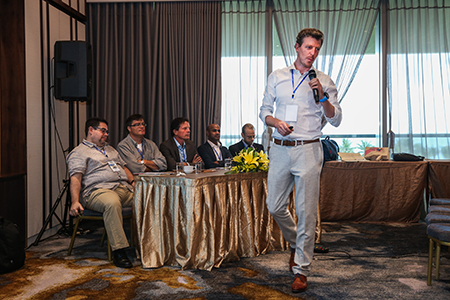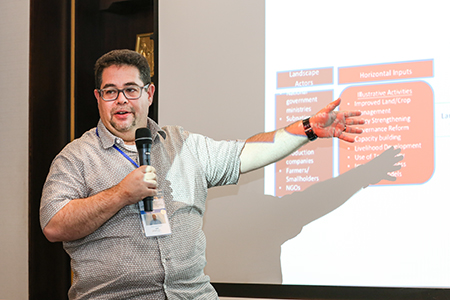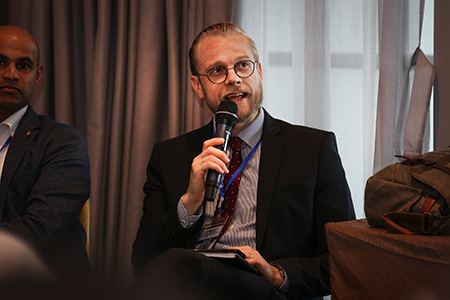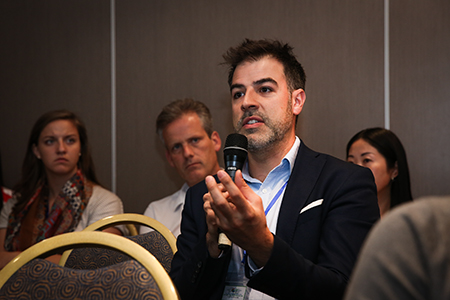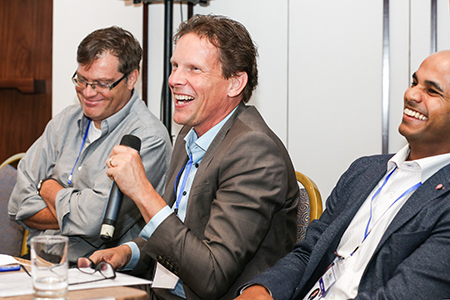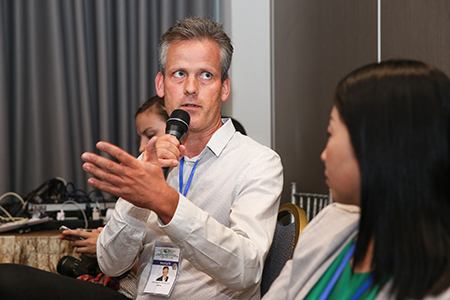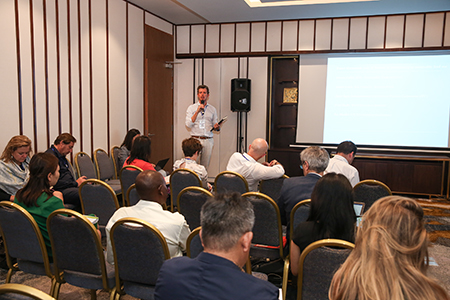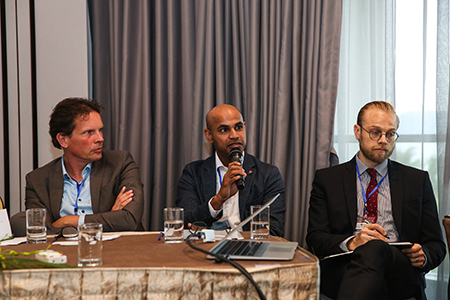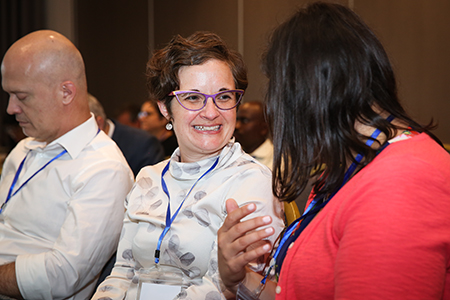|
This side event, which took place in the afternoon, explored best practices and lessons learned in impact financing, the missing links between private sector goals and deforestation policy, and how to plan within GEF-7 for greater impact and environmental benefits.
Ivo Mulder, UN Environment, moderated the session, introducing the topic by noting that around $1.7 trillion of debt, equity and other finance contributing to deforestation through the agricultural sector dwarfs investment in sustainable land development. He said it is therefore vital to explore ways to attract more private sector investment in this area.
Paul Hartman, Senior Environmental Specialist, GEF Secretariat, highlighted a GEF funded program, the Good Growth Partnership, which engages the entire supply chain to leverage significant private investment in sustainable forest management practices. He said the GEF is aiming to leverage US$1.7 billion in co-financing from its US$100 million investment to de-risk the private sector's investment in GEF6. The GEF's support to private sector in GEF7 will be $130 million as non-grant investment support.
Sanjiv Louis, South East Asia Investment Director, Sail Ventures, noted his company was investment advisor to the &Green Fund, a significant new fund aiming to de-risk private investment in agricultural production value chains to protect and restore tropical forests and peatlands, and make agriculture more inclusive and sustainable. He outlined that Sail Ventures had assisted &Green Fund in a $95 million green bond issue to capital markets but noted that it was a novel loan mechanism with limited investor appetite to date.
Steven Collett, Sustainable Trade Initiative (IDH), said his organization had established &Green Fund with the Norwegian International Climate and Forests Initiative as anchor investor, having contributed US$100 million, and Unilever as the major private sector investor to date, having contributed US$25 million.
Jussi Tapio Lehmusvaara, Operations Officer, Blended Finance Department, IFC, noted that structuring forest and land sector investments is complex and time-intensive, and that some of the key issues include: developing a project and structuring usually takes longer than typical investment financing, thus scaring off many potential investors; capacity and creditworthiness of potential loan recipients; challenges in reaching sufficient scale to warrant the transaction and other costs involved; and lack of clear regulatory and business environment that would support developing the project and building the business case.
Fred Stolle, Global Forest Watch program, World Resources Institute (WRI), highlighted the technical capacity to use satellite data to scrutinize the extent to which forest cover is changing, even down to 0.1 hectare.
In an interactive discussion between panel members and participants, the following key topics were covered: disparate regulatory approaches across jurisdictions complicated further already-challenging international financial initiatives; the need for scale to attract major investment, in which actors, including civil society, development agencies and governments, could work to aggregate potential projects into substantial investment packages in the order of US$100 million, where public de-risking finance would represent around 10% of total funds involved; international agreements, such as climate negotiations, should provide consistent signals to markets to drive further investment; satellites can detect deforestation but cannot provide information on the drivers of land use change, such as fire management, palm oil production, agricultural production and logging, nor on other social issues of concern such as child labour exploitation. |
|



